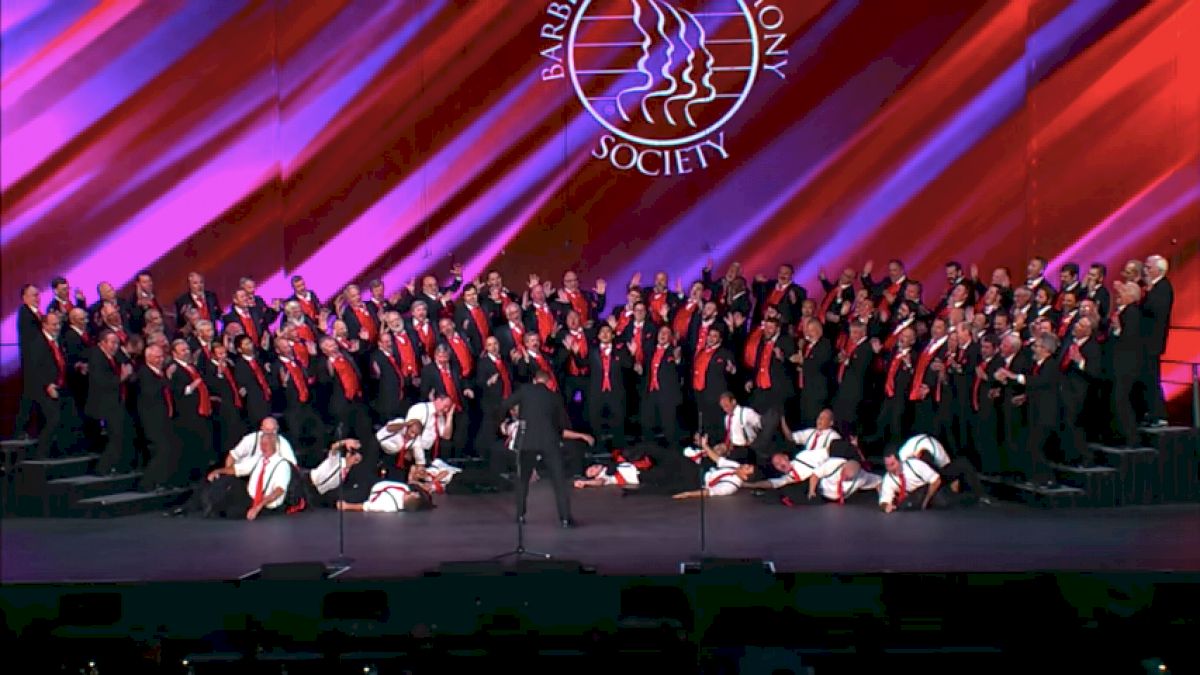BHS Music Category: Judges Spend Years Preparing For This
BHS Music Category: Judges Spend Years Preparing For This
As we head into Orlando for BHS International, it’s time to get those scorecards ready. Today we’re breaking down the Music Category.

As we head into Orlando for BHS International, it’s time to get those scorecards ready. Certified judges take many hours over years of training to earn the right to judge a contest, especially one as important as International. Can you emulate the judges’ rankings?
The full set of rules are available through Barbershop Harmony Society, and today we’re breaking down the music category. One of three categories included in the total score, this category alone has more than 16 pages in the Contest and Judging Handbook dedicated to it.
Watch BHS International LIVE only on FloVoice!
Here’s your accelerated training to help you follow along through all five days of competition.
MUSIC CATEGORY
Definition: the song and arrangement, as performed
“A strong musical performance is one in which everything provided by the composer and arranger is skillfully delivered and effectively integrated in support of the musical theme.”
This means that the music judges, while acknowledging themes and performance, must ultimately disregard those aspects unless they interfere with the music itself. Instead, the focus here is on:
Rule No. 1: The performance must include “presence, accurate execution, and artistic delivery of the consonant harmony traditionally identified with the barbershop style.”
With the first in mind, the music judges then critically observe:
Melody
Modern music has a way of sometimes obscuring or altering the melody, but in barbershop the melody must remain present and easily identifiable. The melody, presented most often by the lead, must define the tonal center of the song and predominantly stay lower than the tenor and higher than the bass. Embellishments are encouraged, but severe alterations to the original melody are highly discouraged.
Lyrics
A distinct characteristic of barbershop is homophonic singing — that is, all voice parts singing the same syllables and words at the same time. While some passages can deviate, the more homophonic singing, the more opportunity for locking and ringing which garners higher scores. Song choice is important here, as poetic and rhyming lyrics earn higher scores.
Harmony
It bears repeating: consonant harmony is the quintessential element of the barbershop style. In order to earn a high score, a performance must include “a predominance of major triads and dominant seventh chords in strong voicings, as well as in well-tuned, well-balanced, and synchronized chords.” While other chords are allowed, any chords that overshadow the dominant seventh or major triads will ultimately lower the score. Dissonant and minor sevenths are highly discouraged.
Range
This one is pretty straightforward: sing within a range that allows each voice part to produce a full, resonant sound. Anything else will lower the score.
Rhythm
Barbershop style relies on standard meter and, predominantly, uncomplicated rhythms. Performers should only include rhythms that can be executed cleanly and without distraction. Rubato is allowed, but the song should still maintain a strong sense of meter.
Construction and Form
Melodic and harmonic structure of the song is key here. Does it flow naturally or is it disjointed? Does it stay interesting or is too much repeated? Also of note — contestable arrangements should have an even number of measures.
Embellishments
Use them, but use them wisely. The judges aren’t looking for extensive riffs, crazy bell chords, swipes, echoes, or other special effects unless they serve the song. Bring out your bells and whistles, just not for the sake of showing off your bells and whistles. Barbershop isn’t meant to be overly complicated-embrace the simplicity and execute it well.
The music judges evaluate both the elements themselves and their delivery.
Secondarily, the music judges are also assessing the suitability of the song choice and strength of the arrangement.
An A+ performance? According to the Handbook it is “the sensitive handling of musical elements — such as melody, harmony, and embellishments — demonstrates musicality in a performance. A strong musical performance is one in which everything provided by the composer and arranger is skillfully delivered and effectively integrated in support of the musical theme.”
In layman’s terms? Present a meticulously arranged song with high-level skill. Easy enough, right?
For comparison, let’s look at two of the finalist quartets from last year. Disclaimer, making it into the top ten at Internationals is quite a feat, so both groups we are hearing are excellent. However, there is a 43 total point difference in the music category between these two performances:
’Round Midnight - 2017 International Quartet Finals “Saving All My Love”
Music Score: 430
Main Street - 2017 International Quartet Finals “Razzle Dazzle”
Music Score: 473
Both beautiful performances, surely. Where did Main Street win out? Listen for the chord locking — all the result of clean entrances, balanced tone, and slightly more full-voice and resonant singing. Forty-three points looks like a huge disparity, but in reality, it’s only a few points difference from each of the five judges.
Choruses are judged with the same standards, with the added difficulty of making sure a large number of voices on one part remain synchronized in pitch, rhythm, and tone. Again, we’re watching finalists from the International competition, so the quality of both choruses is quite good.
Circle City Sound - 2017 International Chorus Final “Superhero Medley”
Music Score: 393
Masters of Harmony - 2017 International Chorus Finals “Too Darn Hot/Fever”
Music Score: 486
While both performances were highly entertaining, the latter presented more unity in pitch, rhythm, and tone and the Circle City Sound medley sometimes lost breath support and chord locking in favor of visual presentation.
Scoring sheets for Music are available on pages 184-185 of the Handbook if you’re brave enough to score along. Will your at home scores match the judges’ this year?
Remember to watch 2018 BHS live on FloVoice from July 3-7!